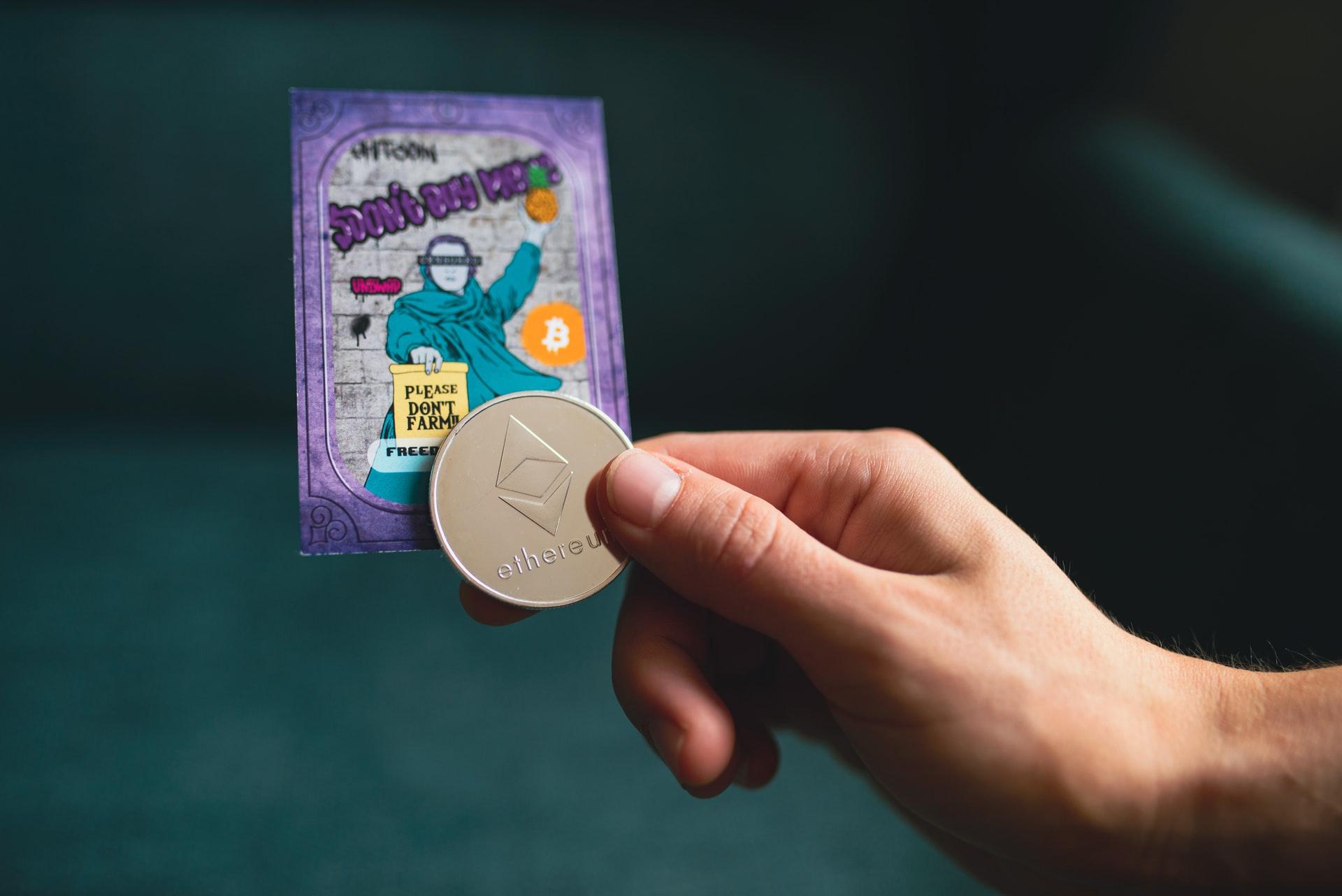Instead of allowing players to transfer weapons or abilities across games, non-fungible tokens will likely function as components of modern games and virtual universes.
Legend has it that Vitalik Buterin founded Ethereum because his warlock was nerfed.
“I happily played World of Warcraft during 2007-2010, but one day Blizzard removed the damage component from my beloved warlock’s Siphon Life spell. I cried myself to sleep, and on that day I realized what horrors centralized services can bring. I soon decided to quit.”
The story is a metaphor for the effectiveness of decentralization. If a gaming skill or item became an immutable blockchain token – what we currently refer to as a non-fungible token (NFT) – a corporation like Blizzard Entertainment would be unable to nerf or weaken your Siphon Life. This implies an additional possibility: Any game’s software may read them because non-fungible tokens reside on public blockchains. If Siphon Life were an NFT that existed on a public blockchain, it would be feasible to utilize it in games other than World of Warcraft, such as Assassin’s Creed, Uncharted, or even Tetris.
During the 2017-2018 initial coin offering bubble, several somewhat comparable World of Warcraft clones attempted to sell virtual swords and armor before developing the game. When this occurred, Vitalik would have been around 16 years old, and the anecdote is more of a winking joke (“I wept myself to sleep”?) than a severe design suggestion. Nonetheless, others have interpreted it fairly literally as a demand for games to be constructed using immutable tokens to represent abilities or equipment.
The concept has been abandoned by more recent blockchain game ventures, such as Ember Hearts and Mirandus. But the “non-fungible item” structure faces a growing number of obstacles. Blockchain gaming executives are typically unenthusiastic about the notion, and traditional game companies have little reason to progress toward interoperability. It appears less probable that you will soon be able to use a bow and arrow from Horizon: Zero Dawn in Counter-Strike.
However, the emergence of the “metaverse” notion has created new opportunities. Instead of NFT interoperability across games, pioneers increasingly see a bottom-up strategy in which games will emerge from NFT ecosystems: imagine CryptoKitties races or platform-hopping Bored Apes.
Vitalik’s warlock may not be immune to nerfing, but NFT-based game assets might evolve into even crazier.
Why play games on the blockchain?
Runes are the money of Elden Ring, a massively popular game whose multiplayer capabilities allow for the buying and selling items. A few weeks following the release of Elden Ring, I began seeing YouTube advertisements for rune marketplaces, according to Carlos Perierra, an investor at Bitkraft Ventures. But these markets are dangerous.
Perierra describes the present complex procedure for Elden Ring rune purchasers: “You must enter PVP mode, and the seller will drop the runes for you.” These activities have existed for a long time, but you must access the gray market to engage in them, which can be fraudulent. Why not attempt to make it more scalable and efficient?”
This is the most basic argument supporting the feasibility of utilizing blockchains to monitor virtual items: Already, items are purchased and exchanged at a breakneck rate, frequently exposing gamers. Transferring decorative objects between players, such as “skins” for weapons, is already a multibillion-dollar industry (no, honestly), with a great deal of trade and speculation. Only a few companies, such as Valve, have sought to legitimate and shape the marketplaces.
NFTs might make purchasing and selling cosmetics and other products much more straightforward and safer for gamers while allowing creators to gain a more significant portion of the value of their works. Valve’s authorization of skin trade-in games such as Counter-Strike: Global Offensive earns tens of millions of dollars for the company and independent skin creators.
However, Valve can manage and grow this business mainly because it owns Steam, the ubiquitous digital gaming store. The portal also sells items for other games, although Valve gets a hefty 30 percent share of third-party transactions. Such expenses are one reason why vendors of items for games like Elden Ring or World of Warcraft sometimes employ uncomfortable, unauthorized workarounds, which leave gamers exposed to being cheated by dishonest dealers.
The “pay to win” dilemma
Nonetheless, there is a legitimate reason why these marketplaces are not official: Even though many gamers expressly adore them, others expressly dislike them. In multiplayer games, players frequently view the acquisition of rare and potent things as an accomplishment—many views selling such items for real money as a sort of cheating that devalues their in-game achievements.
This is especially true for commodities that make a character more potent or competitive: games that formally sell powerful items for real money are sometimes ridiculed as “pay to win.” Making intense game things into NFTs is not necessarily a slam dunk for this reason. Any game that followed this concept would be “pay to win.”
Numerous games now have multiplayer components, and character skills are frequently adjusted to make the competition more equitable. Siphon Life’s nerf made the game more enjoyable for other players, and the success of World of Warcraft after Vitalik’s departure implies that Blizzard got this and related changes about right. (Sorry, Vitalik.) For similar design reasons, making talents or goods irreversible even within a single game is likely infeasible.
Cross-platform portability would also challenge designers with balancing and player experience concerns. An NFT is little more than a sign of ownership and would not consistently identify the actual usefulness of game objects. There is no reason, for instance, why an NFT sword that is pretty powerful in one game cannot become extremely powerful in another. Pereira states, “Even if we all agree that interoperability is OK if I open the walled garden as the developer, it’s still quite complex.” It becomes much more complicated very quickly.
There are also difficulties with the graphical user interface. Various design tools, like Unreal and Unity, may be used to develop 3D graphic assets for video games. “These objects have proprietary data formats tied to specific rendering engines,” explains MetaMetaverse platform CEO and founder Joel Dietz. It is not simple to get them to operate together. Dietz stated that one objective of MetaMetaverse is to facilitate the interoperability of assets across engines.
If there were sufficient industry collaboration, for example, in developing interoperability standards, a significant portion of this complexity might be reduced.
“That’s the Holy Grail; that’s the dream,” said Ahmed Al-Balaghi, CEO and co-founder of Biconomy, developing blockchain gaming infrastructure. However, who will develop these standards? The player who has the best potential to lead this endeavor may have squandered his opportunity. Al-Balaghi, referring to the giant once known as Facebook, asserts, “with all the criticism they’ve received, Meta cannot lead on standards.”
However, the greatest obstacle may be locating viable business models for NFT products, which would radically alter how many game companies generate revenue. “From a financial viewpoint, [conventional developers] are now offering in-game products that players are willing to purchase without expecting a reward.” This might be a deterrent to tokenizing objects, and it is a significant reason why Al-Balaghi believes widespread interoperability of game items is “quite far off.”
However, it is unclear whether the incentives for specific present Web 3 initiatives differ significantly. Many have spent the previous two years courting celebrity and designer collaborations. The primary objective of these transactions is to lure people to a specific platform; therefore, making assets interoperable may not be desirable.
Dietz stated, “Sandbox pays many individuals to build on Sandbox.” “Therefore, even if the product could be used elsewhere, I’m sure they would have defensive licensing to prevent that from occurring. This is a challenging barrier to overcome if you are promoting interoperability.
Construct Backwards
Loot, an NFT series started in August 2021 by Dom Hoffman, who previously developed the pre-TikTok video app Vine, is likely the initiative that has sparked the most conversation regarding NFTs symbolizing in-game stuff. Each loot NFT consists of a simple list of adventurous equipment, such as wands and cloaks. The notion that people spent thousands of dollars for these black-and-white text blocks was met with widespread astonishment, especially given it occurred during a general insane NFT mania. In addition, Loot prices have declined alongside the rest of the market.
But philosophically, Loot is among the most intriguing NFT efforts to date. As Hoffman tweeted at the time, the Loot NFTs lack graphics and statistics on purpose so that others may analyze them. The general concept was that a single entity could generate elements, and then the game would be constructed on top of them – an inversion of the typical procedure.
The Loot experiment has not yet created a noteworthy game, and it may eventually be more of a mission statement than a platform for games. However, the concept was intriguing and practicable even before the current NFT and metaverse crazes.
“Cat caps and cat racing” occurred in late 2017, when CryptoKitties became the first massive non-fiat currency craze (so huge it broke Ethereum). Mik Naayem, the chief business officer of Dapper Labs, explains, “The major aha moment for us with CryptoKitties was that within a couple of months, we had sixty different applications that produced stuff for the Kitties.” The racing game referred to by Naayem was KittyRace, a very primitive, two-dimensional track on which Kitten owners could compete. Still, Naayem considers this a far superior paradigm for NFTs in gaming than tokenizing in-game objects.
“Taking anything from World of Warcraft and incorporating it into Need for Speed will not happen,” he stated. “However, as soon as a large enough community forms around an asset, game developers will begin constructing around it since there is an audience.”
In recent years, this is roughly what has transpired with the most popular NFTs. In April, the makers of Bored Ape Yacht Club, Yuga Labs, revealed a virtual world named Otherside. As playable avatars, not just BAYCs but also CryptoPunks, Meebits, and other collections held by Yuga will be importable. In contrast to what occurred with CryptoKitties, the game is being developed by the same guys that created NFTs. However, this indicates that NFT “things” may serve as the foundation for fun instead of designed specifically for a game.
The emergence of these virtual worlds over the past four or five years has significantly altered the discourse around blockchain gaming. Otherside is a whole, immersive “metaverse” further distinguishes it from the early, modest CryptoKitties add-ons. And similarly to how Otherside is more vertically integrated than KittyRaces, metaverses may provide a more simplified, albeit less revolutionary, the vision of NFT-based gameplay.
The most significant model for Charles Smith, CEO of the metaverse project Nifty Island, is the children’s game Roblox. A vast environment is inhabited by minigames that are primarily user-created.
Smith states that Roblox is the first attempt to become the YouTube of gaming. “At any one time, individual Roblox games have more DAUs than most [big-budget game] titles. The other companies continue to behave like old Hollywood, but the future belongs to “little developers” creating niche experiences inside a common framework.
This would make limited interoperability very simple, as a single governing organization could establish the conditions for how objects function in the larger world and move across games. The second key point is that games are being developed across a range of blockchain ecosystems, and technological compatibility on the back end is still unknown; hence, it is likely more practical to constrain things to a single chain for the time being.
In the near term, Al-Balaghi opined, “having diverse experiences within a single environment will lead to greater success.” It is easy to start a business and enter the market. However, he stated that these self-contained worlds might become a platform for greater openness if individuals want it. “Developers must be persuaded to modify the code for interoperability. Do the administrators of these semi-open systems desire full openness?”
This is the most detailed plan for the future of interoperable gaming I’ve heard while reporting on this topic. Nonetheless, it mirrors a more general sentiment: although the theoretical potential of utilizing blockchain assets for gaming are great, creating quality games is the key. Aside from so-called “play to earn” games that emphasize financial components above gameplay, no blockchain-based game has gained significant consumer traction.
The impending bear market may provide a more conducive atmosphere for focusing on content, experimenting with new NFT-based models, and recruiting people interested in more than simply seeing numbers rise.
Seattle Software Developers does not just dabble in NFT development; we have a track record of developing money-making NFT brands, having completed hundreds of blockchain projects. Contact us today to discuss your NFT project.





